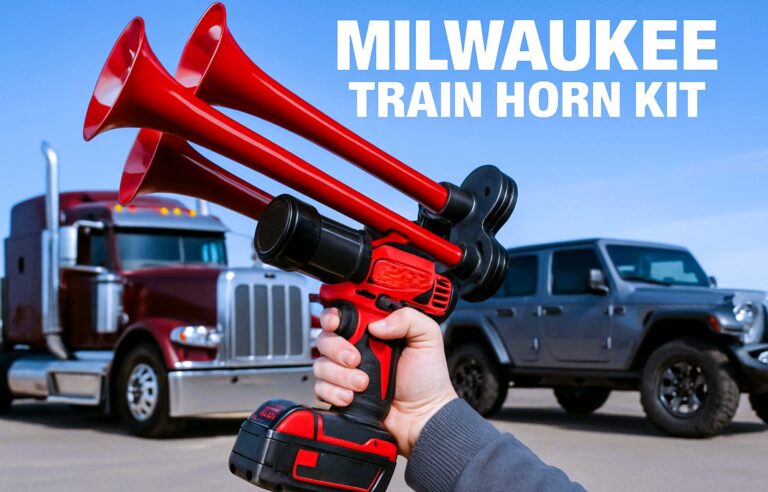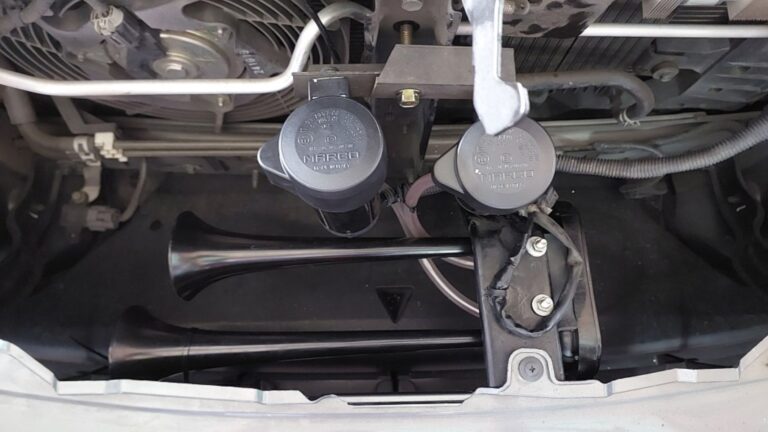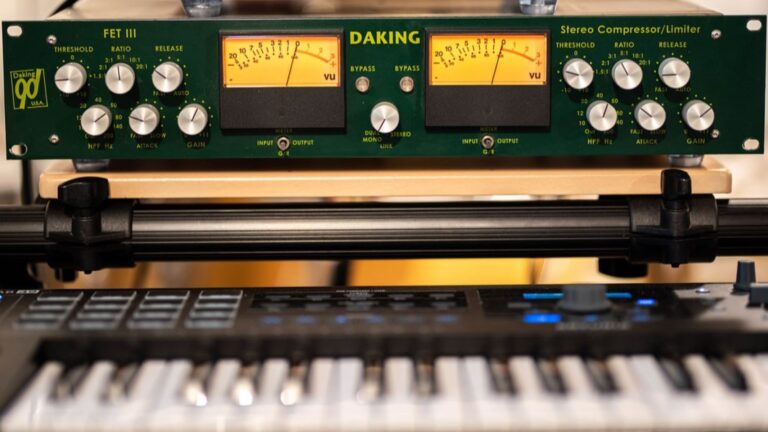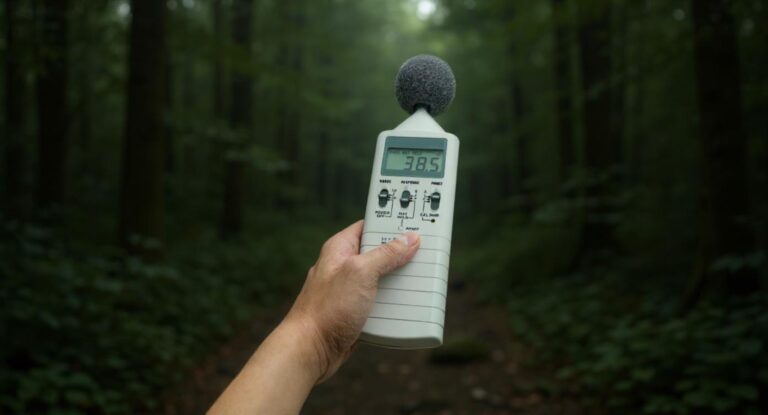The Most Underrated Accessory for Rural Work Vehicles
Have you ever stood beside a tractor, harvester, or a utility vehicle and thought, “Hmm, something doesn’t sound right?” That sound—that subtle change in tone, pitch, or rhythm—can be more revealing than you might think. Farmers, mechanics, and utility operators have been trusting their ears for decades. But what if there was a specific tool that could take that guesswork out and turn your gut feeling into hard data? Let’s talk about one of the most overlooked heroes in machinery maintenance: The Acoustic Diagnostic Tool.
Why Sounding Tools Matter in Machinery Health
Machines may not use words, but they constantly communicate through sound. Whether it’s a soft hum from a healthy engine or a sharp knock from a failing bearing, every piece of machinery has its own acoustic signature. The moment that signature changes—whether subtly or dramatically—it’s often a signal that something deeper is happening inside. Operators who know how to listen, truly listen, can catch issues early and prevent costly breakdowns. But relying solely on the human ear in a loud workshop or noisy field isn’t always practical. That’s where sounding tools come in as your mechanical ears with superpowers.
These tools work by capturing and analyzing the audio frequencies that machines emit during operation. Many of these sounds fall outside the range of human hearing, especially in the ultrasonic spectrum. With the help of a sounding device, you can pick up the earliest signs of friction, misalignment, or internal wear long before the issue becomes visible or causes failure. This early detection is critical in industrial and agricultural environments where every hour of downtime can translate to lost revenue or missed planting and harvesting windows.
One of the greatest benefits of using sounding tools is their ability to shift your maintenance strategy from reactive to proactive. Instead of waiting for something to go wrong, you’re gathering intelligence and acting before damage occurs. For instance, a minor leak in a hydraulic system might start as a faint hiss detectable only through an ultrasonic device—but left unattended, it can result in full system failure and significant repairs. By integrating acoustic diagnostics into routine checks, operators gain not only peace of mind but also longer machine lifespans.
Furthermore, sounding tools help reduce human error in diagnostics. A mechanic’s intuition is valuable, but it isn’t infallible. Two different people might interpret the same noise in completely different ways. Sounding tools remove that ambiguity by offering precise, measurable data. They complement human skill with science, providing a powerful combination that leads to better decisions, fewer misdiagnoses, and ultimately, a more efficient and reliable operation.
What Exactly Is a Sounding Tool?
| Tool Name | Sound Range Detected | Primary Use Case | Common Machine Types | Data Output Format |
| Mechanical Stethoscope | Audible (20 Hz – 20 kHz) | Pinpointing knocks, hisses, or ticking sounds | Engines, compressors, small pumps | Direct to ear (analog sound) |
| Ultrasonic Leak Detector | Ultrasonic (20 kHz – 100 kHz) | Detecting small leaks, friction, electrical noise | Hydraulic lines, pneumatic systems | Audible via headphones, visual meter |
| Vibration Analyzer | Wide frequency spectrum | Diagnosing imbalance, misalignment, bearing wear | Rotating shafts, motors, gearboxes | Digital graphs, frequency charts |
| Laser Acoustic Scanner | Audible and ultrasonic | Remote sound localization, acoustic mapping | Large machinery, conveyor systems | Thermal-like sound maps |
| Combination Diagnostic Tool | Multi-range (audible + ultrasonic) | General condition monitoring and trend tracking | Tractors, harvesters, industrial utility vehicles | Digital logs, alerts, dashboards |
Different Types of Sounding Tools
Not all sounding tools are created equal. Some are designed for pinpointing tiny leaks in hydraulic systems, while others are engineered for analyzing complex vibrations in massive industrial motors. Here’s a detailed list of the most commonly used sounding tools in utility and agricultural machinery diagnostics—each with its own strength, specialty, and application:
- Mechanical Stethoscope
A basic yet effective tool that works similarly to a doctor’s stethoscope. It’s used by placing the probe against different parts of a machine to listen for audible signs like knocking, hissing, or ticking. This tool is perfect for identifying misfires, loose components, or abnormal pulsations in engines, pumps, and bearings. It operates within the normal range of human hearing and relies heavily on the technician’s listening skills and experience. - Ultrasonic Leak Detector
This device detects high-frequency acoustic emissions that are usually far above what the human ear can perceive. It’s commonly used to uncover tiny air or hydraulic leaks, worn valve components, and cavitation in pumps. By converting ultrasonic signals into sounds you can hear and visuals you can see, it enables fast and accurate detection of problems that would otherwise remain invisible. Ideal for compressed air systems and hydraulic diagnostics in field conditions. - Vibration Analyzer
These tools monitor vibrations across a broad frequency spectrum and are especially useful for assessing rotating equipment. They detect harmonic imbalances, looseness, misalignments, and bearing defects. By analyzing vibration signatures, they help technicians understand the dynamic behavior of components like motors, fans, gearboxes, and drive shafts. This tool is more data-driven and is often used for scheduled predictive maintenance. - Laser Sound Scanner
A more advanced, remote-based tool that combines laser positioning with acoustic detection. It’s used for acoustic imaging—essentially mapping the origin of sound across large machines or enclosed systems. These scanners are ideal for inspecting hard-to-reach equipment without physical contact. Operators use it to visually locate sound sources from a distance, often with great accuracy, making it especially valuable in large-scale agricultural processing units or heavy utility operations. - Combination Acoustic Diagnostic Tool
A hybrid device that merges several detection technologies into one—typically including audible sensors, ultrasonic receivers, and vibration measurement capabilities. This all-in-one solution is perfect for mechanics and operators who want versatility without carrying multiple tools. It’s commonly used across diverse machine types, from tractors to industrial-grade harvesters, and provides digital feedback in the form of dashboards, audio indicators, and trend analysis logs.
The Champion: Ultrasonic Leak Detector (And Why It’s Underrated)
In the world of high-tech machinery maintenance, tools like engine analyzers, GPS modules, and IoT sensors often steal the spotlight. They’re flashy, digital, and packed with data. But while everyone’s busy obsessing over connectivity and cloud integration, one humble tool continues to work wonders quietly in the background: the ultrasonic leak detector. Despite its enormous potential, it rarely gets the attention it deserves. It’s not glamorous, it doesn’t display flashy metrics on a tablet, and yet—it might just be the smartest investment you can make for keeping your machines running smoothly.
What makes the ultrasonic leak detector truly special is its ability to detect sounds that are completely inaudible to the human ear. Leaks, wear, electrical arcing—these issues often emit high-frequency signals long before they’re visible or catastrophic. It’s like being able to hear a whisper in the middle of a thunderstorm. The tool picks up these subtle frequencies and translates them into audible feedback or digital readouts, helping operators catch problems early. Unlike traditional diagnostic tools that often rely on physical inspection or secondary symptoms, ultrasonic detectors go straight to the source—acoustically.
Beyond just sensitivity, the real magic lies in their accuracy. These detectors are built to pinpoint the precise origin of a leak or abnormal sound, eliminating guesswork entirely. Whether it’s a hairline crack in a hydraulic hose or an air leak hidden under layers of metal casing, the ultrasonic tool guides you right to it. This targeted detection not only saves time but also prevents unnecessary part replacements and labor hours spent disassembling components that were never the problem in the first place.
Another reason these tools are worth their weight in gold is their practicality in the field. They’re compact, rugged, and designed to handle rough environments—ideal for use in agriculture, construction, and heavy-duty utility sectors. While other devices might require calibration, software updates, or clean environments, ultrasonic leak detectors simply get the job done. Their speed, simplicity, and reliability make them indispensable for anyone serious about preventive maintenance. It’s time they moved from the background into the spotlight where they rightfully belong.
How Do Ultrasonic Leak Detectors Work?
| Process Step | Description | What It Detects | Where It’s Useful | User Output |
| Signal Detection | The device’s sensor picks up ultrasonic waves emitted by moving fluids or friction | Air leaks, steam leaks, hydraulic escapes | Compressed air lines, fluid hoses, valve seats | Raw ultrasonic data |
| Frequency Conversion | Internal processor converts ultrasonic sounds into audible signals | High-frequency anomalies | All pressurized systems and electrical units | Audio signal in headphones |
| Visual Display Interpretation | Digital display shows signal intensity and direction | Peak frequencies and signal strength | Directional leak pinpointing | Bar graph, LED scale, or numeric readout |
| Noise Filtering | Background noise is filtered out using tuning and frequency targeting | Removes environmental interference | Noisy workshops, outdoor machinery environments | Clearer signal to isolate leak source |
| Precision Location | Operator uses the probe to narrow down the exact location of the leak | Single-point acoustic pinpointing | Pipes, joints, seals, couplings, electrical panels | Audible tone increases near leak location |
5 Real-Life Scenarios Where Sounding Tools Save the Day
Sounding tools aren’t just technical gadgets for enthusiasts—they’re real lifesavers in daily agricultural and utility operations. Here’s a detailed look at how they step in and prevent serious problems in actual field conditions:
- Preventing Hydraulic Hose Bursts
Imagine you’re working in the field, and everything looks fine at first glance. But then you sweep a sounding tool across a hydraulic line and suddenly pick up a sharp, high-frequency tone near a coupling. That tone? It’s the early acoustic signature of a pressurized leak about to burst. Without the tool, you probably wouldn’t have noticed it until the hose exploded under pressure, potentially causing downtime, fluid loss, or even injury. Catching it early with a sounding tool means you can replace the part proactively—before disaster strikes. - Diagnosing Faulty Bearings in a Combine Harvester
During harvest season, time is money. A faulty bearing can seize at the worst moment, halting your entire operation. With a sounding tool, especially an ultrasonic detector, you can “listen” to the internal chatter of bearings without dismantling the machinery. A subtle change in frequency—usually an increase in sharp, erratic ultrasonic clicks—indicates that the bearing is wearing out. This early warning allows you to schedule a quick replacement before the entire assembly fails and takes your combine offline in the middle of harvest. - Spotting Air Leaks in Utility Vehicles
Utility vehicles depend on compressed air systems for brakes, suspensions, and controls. A tiny leak might not be visible or audible, especially in a noisy service yard. But a sounding tool picks up the escaping air with ease—even through panels or tight corners. By locating and fixing the leak early, you improve system pressure stability, increase fuel efficiency, and avoid brake failures or control lags. Over time, this simple fix adds up to thousands in fuel and maintenance savings. - Identifying Cavitation in Pumps
Cavitation is like an invisible killer in fluid systems. It happens when vapor bubbles form and collapse in a pump due to uneven pressure—damaging impellers and reducing performance. Visually, everything might look fine. But acoustically, cavitation sounds like popping or rapid clicks at ultrasonic frequencies. A sounding tool identifies this irregular pattern instantly, allowing technicians to address the root cause—like an air pocket or flow restriction—before the pump suffers irreversible damage. - Finding Electrical Discharge in Control Panels
Sometimes the biggest threats are silent and hidden. In control panels, loose wires or deteriorating insulation can cause micro-arcing or corona discharge. You won’t see it, and you won’t hear it—until there’s a fire or total system shutdown. But sounding tools tuned to ultrasonic frequencies can detect the distinct buzz or crackle of electrical discharge. Even with the panel door shut, the detector alerts you to danger inside. This kind of preventive scan can help avert fires, outages, and costly replacements.







